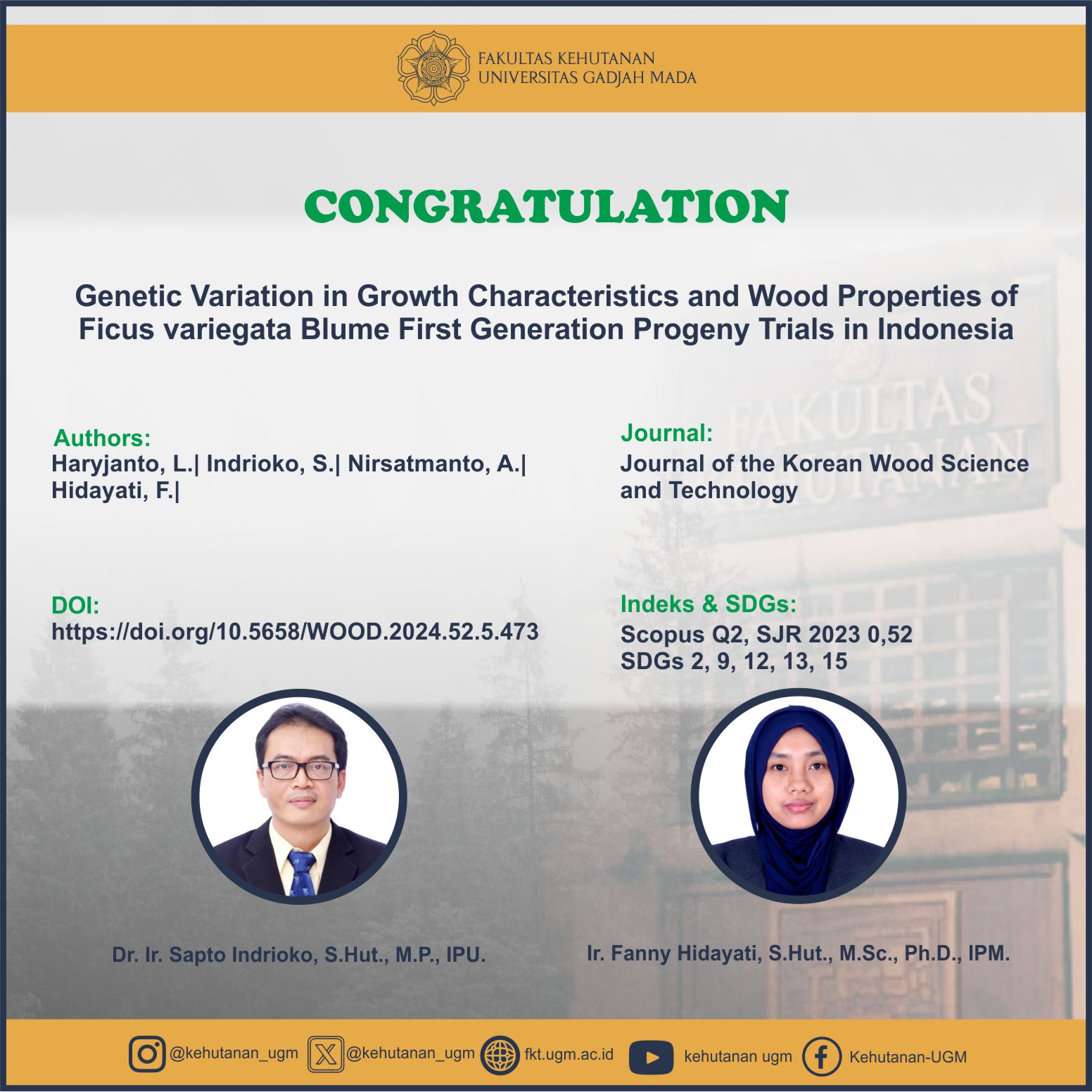
Abstract
Two first-generation progeny trials of Ficus variegata Blume were planted in Yogyakarta, Indonesia, consisting of 17 families from the provenances of West Nusa Tenggara (WNT) and 19 families from the provenances of Cilacap-Pangandaran (C-P), respectively. The trials were evaluated after 10 years for growth characteristics [diameter (D), tree height (H) and stem volume (V)] and wood properties [stress-wave velocity (SWV) and Pilodyn penetration (P)]. Genetic variation, the coefficient of additive genetic variation (CVA), and heritability estimation were analyzed. Subsequently, genetic correlation between traits was estimated. The analysis of variance showed that there were significant differences in growth characteristics and wood properties in the WNT families, with significance observed across most factors except for height and P in the C-P families. The CVA in growth characteristics (D, H, V) was higher than for wood quality (SWV and P) in WNT and C-P families. Estimated family heritability (h2f) for growth characteristics, SWV, and P were high in the WNT families but moderate in the C-P families showing that genetic variation in the observed traits was more additive in the WNT families. The positive estimated genetic correlations between growth characteristics in two progeny trials, and the moderate to strong negative genetic correlation between D and P and also between P and SWV showed that growth characteristics and wood quality can be genetically improved simultaneously by using D as a selection criterion is an appropriate breeding strategy for F. variegata.
SDGs:
SDG 2: Zero Hunger
SDG 9: Industry, Innovation and Infrastructure
SDG 12:Responsible Consumption and Production
SDG 13:Climate Action
SDG 15:Life on Land
Link Dokumen:
Download
